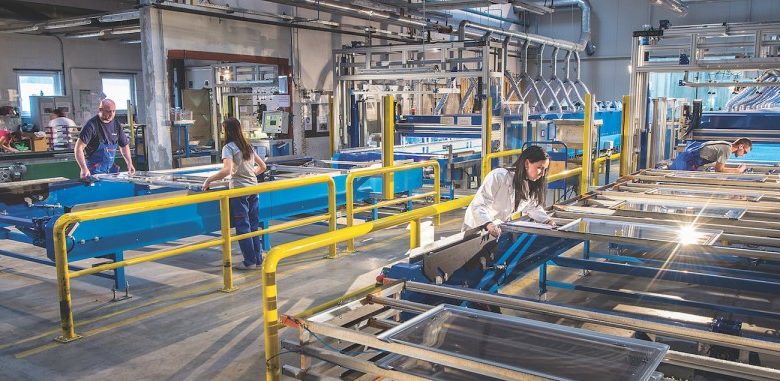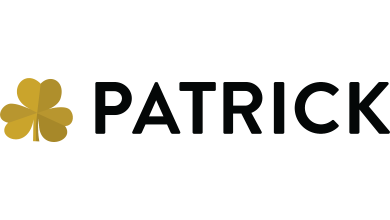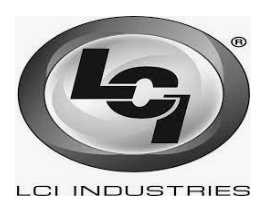A Clear Advantage

Glass and windows seem to go together like pen and paper, like peanut butter and jelly or like lock and key. After all, the transparent, manmade material in windows dates back to the ancient Romans more than 2,000 years ago. When it comes to RVs, however, glass may not always be the best answer. Acrylic windows have already overtaken glass windows in the European market, and a number of American OEMs are using it as well.
While acrylic offers a lightweight alternative to glass, both suppliers and OEMs say that really isn’t a primary concern to many U.S. buyers. Instead, they say, the value comes from acrylic windows’ versatility and great looks.
Old World Styling
Acrylic windows aren’t new to the RV industry, even in the United States.
Rex Willett, president of Cedar Falls, Iowa-based R.C. Willett Co., says his company has been installing the windows in the company’s Northstar Campers line of truck campers since 1987, after he learned about them the previous year while attending the Caravan Salon trade show in Dusseldorf, Germany.
At that time, the windows he purchased were made in Sweden. Later, that company was acquired by the German manufacturer Seitz, which in turn was acquired by Dometic. Today, that company supplies acrylic windows to the industry through Elkhart, Ind.-based Dometic North America.
“We started bringing over a lot of our Europe- an-based products about 10 years ago,” says Mike Boyer, director of RV-OEM sales for Dometic North America. “Anything that had that European flair, we started bringing over and offering it to our customers. The product line is actually very old.”
Trans Atlantic Products is another Elkhart-based company that imports acrylic windows for the RV industry as part of its product line. President Dan Rodabaugh says he was working in the RV industry in Europe when he became aware of the Slovenian manufacturer Plastoform – which started making the windows in the mid-1970s – and entered into a partnership with that firm.
The fact that European RV makers have embraced acrylic windows is not surprising given that, for those manufacturers, weight is everything, according to Rodabaugh. One major reason for that is that a standard European driver’s license limits a driver to hauling no more than 7,000 pounds, including the tow vehicle.
“To be able to have a comfortable, nice-sized RV, you really have to be focused on weight,” he says. “Plus, European gas prices run $11 to $12 a gallon, so weight is phenomenally important.”
Those factors are much less of concerns to U.S. RV buyers and OEMs, although it does play a role in the thinking of some companies that utilize the windows.
Scott Hubble, president of Sugar Creek, Ohio-based nüCamp RV, says much of it depends on the unit involved, particularly those RVs that are focused on achieving low gross vehicle weight ratings.
“If you were to replace glass with acrylic, you might achieve an overall weight savings of 100 pounds,” he says. “But, for our demographic, it’s important. We make trailers that are under 1,000 pounds, and even as you step up, we’ve got others below 2,000 pounds. If you were to replace the acrylic there with glass you might be adding an extra 50 pounds, and that does make a difference.”
However, Northstar’s Willett says that in many cases the weight savings probably isn’t going to balance out against the added cost of the acrylic windows.
“If a person has four or five windows in a camper, is it worth the $2,000 in value to have the lighter windows in it?” he asks. “The way business is in the United States, we’re still trying to cut amenities or cut costs. It’s different thinking in Europe.”
Aesthetic Marvels
And, make no mistake, acrylic windows can be more expensive than standard glass ones.
“It’s a more expensive product to build,” acknowledges Dometic’s Boyer. “The acrylic material is more expensive. It’s a product that has to be tooled, so it’s more complicated in the manufacturing process. You aren’t just bending a frame and putting glass in it.”
He adds that there also are some barriers to the market in terms of becoming a manufacturer, and currently it’s also a product that’s imported.
However, for the North American OEMs that use acrylic windows in their models, the advantages the windows offer far outweigh the price they’re paying – and those companies say their buyers seem to agree.
nüCamp’s Hubble says his company began utilizing acrylic windows in its T@B and T@G lines of teardrop trailers, as well as its Cirrus truck campers in large part because of the aesthetic, which includes soft lines and different tints.
“The aesthetic we present across our lines is fairly unique and different, and the lines of the windows are actually very similar to the lines of our trailers,” he says. “It’s not just a flat, straight line.”
Dylan DeHoff, director of operations for Uniontown, Ohio-based Liberty Outdoors, agrees. He says that company couldn’t achieve the look of its Mini Max and Max teardrop units without the acrylic windows.
“We had these custom-made to match the curve, which is a huge benefit,” he says. “It lets us do things we wouldn’t otherwise be able to do. The large window in the back of the camper is over the main bed and we’re letting in tons of light back there.”
Meanwhile, Michael Gordon, purchasing supervisor for Cambridge, Ontario, Canada-based Erwin Hymer Group North America, says his company is adding them to its towable trailers because of their styling and light weight.
Rodabaugh admits that often what sparks initial interest in the windows is their looks.
“They say, ‘Hey, that looks nice; it’s new and it’s interesting,’” he says. “They see that they look sleek and they look modern. Some of it is simply wondering how we do it. It grabs a customer’s attention right away.”
And, the fact that acrylic windows can be custom-made to fit the shape of a vehicle doesn’t hurt, either.
“From a practical perspective, you can place windows in areas where a conventional window would be too expensive to fit,” Rodabaugh adds. “We can follow the shape of the vehicle, and that can let in more natural light and more ventilation.”
Warm & Dry
The OEMs that use acrylic windows stress that those windows are much more than their good looks would suggest. Along with that extra light, the windows can keep the fresh air flowing while protecting against rain and cold better than conventional windows.
Dometic’s Boyer explains that many acrylic windows are built as a dual-pane system and installed to create a watertight seal.
“With standard windows in the RV market, we don’t prevent water, we manage it,” he says. “That’s why there are weep holes in those products. There are no weep holes in an acrylic window because they eliminate any penetration of water. They speak for themselves in that case.”
One reason for that is the windows are top-hung, which means they can be left open even in inclement weather. nüCamp, for example, has added a dial to the operating arms on its windows so an RVer can make subtle adjustments to how open an acrylic window can be.
“The friction hinges allow a vent, which would be difficult to achieve if you’re using a standard glass window,” says nuCamp’s Hubble.
Rodabaugh adds that Trans Atlantic acrylic windows also have a secure ventilation mode where the window can still allow air to flow, but it can’t be opened. He says that also means a unit can be stored with some ventilation in place.
Additionally, there’s no condensation. Unlike the aluminum-frame windows, there’s also less transference of heat, making the units that have them warmer.
“The acrylic windows don’t sweat,” Rodabaugh says. “With conventional windows, you’re heating the interior and you have sweating on both the frame and the glass. That’s another reason for the weep holes.”
Because they have such a tight seal and a dual pane, Northstar’s Willett says still another advantage of acrylic windows is their noise-blocking ability.
“They’re quieter going down the road, and absolutely quiet on the inside if you’re staying at a truck stop or a Walmart parking lot,” he says. “One of its biggest features is how much noise it blocks out.”
Still another advantage: Many designs come with a flynet screen and day-night shade built right in. Willett says that feature is great for the person who likes to do a little “stealth camping,” as he puts it. And, because the screens raise and lower, if the windows are shut, people aren’t going to be looking through them, adds Rodabaugh.
Acrylic Pros & Cons
While acrylic is strong, it’s not invincible, although it might seem that way.
Dometic’s Boyer says he once did a presentation where part of it involved taking a hammer to an acrylic window.
“We gave it a pretty good whack, but it didn’t break,” he says.
Acrylic is capable of being scratched, although Trans Atlantic’s Rodabaugh notes that as a cast composite material it can be formulated to reduce its susceptibility to scratching.
“We can also coat the window and make it equivalent in scratch-resistance to conventional glass windows,” says Rodabaugh. “For those who worry about scratches, we offer that as a solution.”
Once scratches happen, there are partial fixes.
“There are various cleaners and also home remedies that will take out some of those little scratches,” Boyer says.
Acrylics also require some care in cleaning. Rodabaugh says that was a bigger issue in the past, when companies that manufactured glass-cleaning products were heavily into using ammonia-based formulations. Their use can cloud an acrylic surface.
“It’s an educational thing we have to perform as the OEM,” says Liberty’s DeHoff. “We have to make sure the dealers and customers are aware these are not standard glass windows and it’s best to just use plain soap-and-water solutions or acrylic cleaners with a microfiber cloth. That’s perfectly fine.”
DeHoff adds, “The advantages of what the consumer can do with the windows definitely outweigh the different ways of taking care of them.”
He says other than for nostalgic models, Liberty wouldn’t consider going with anything other than the acrylic windows. “The versatility is just far superior,” DeHoff says. “From being able to match the radiuses on the trailers to being able to make them virtually any size we want, it’s a pretty good option.”
nüCamp’s Hubble calls acrylic windows part of his company’s identity and relates how when the T@B model first came out it had to utilize a flat glass portal window in the door.
“We had to get that portal window custom-made, and when we were finally to offer it as a dual pane acrylic, it was welcomed with open arms,” he says. “People were even replacing their entire door to be able to achieve the look. They really like the aesthetic it offers.”
As for the product manufacturers, their feelings about the future of the product may be a bit mixed. Dometic’s Boyer says he’s seen the market go up and down over the past 10 years as gas prices fluctuate and interest in smaller RVs increases and decreases.
“Now, it’s become more about styling,” he says. “Now that we’re seeing some European-styled Class A units, there’s more of an interest. It ebbs and flows based on what people are looking for.”
However, Trans Atlantic’s Rodabaugh says that his company has seen its market grow by more than 100 percent annually, despite some OEMs’ concerns about cost.
“I think the main thing is that people just don’t know what they are, and consumers aren’t looking for it,” he says. “If we were to reach out to consumers to inform them about the advantages of these products, I think we’d see a very high surge in their popularity.”



